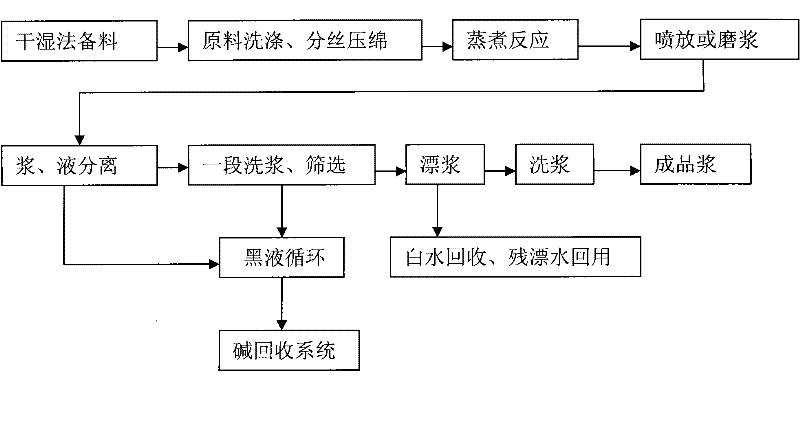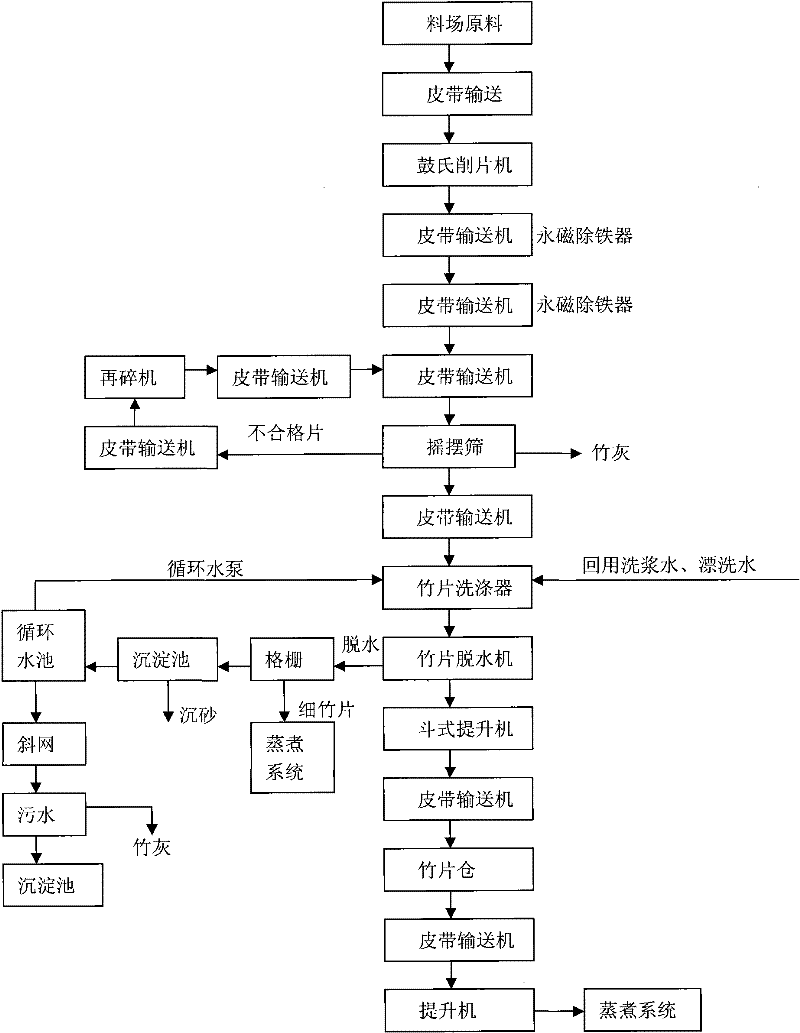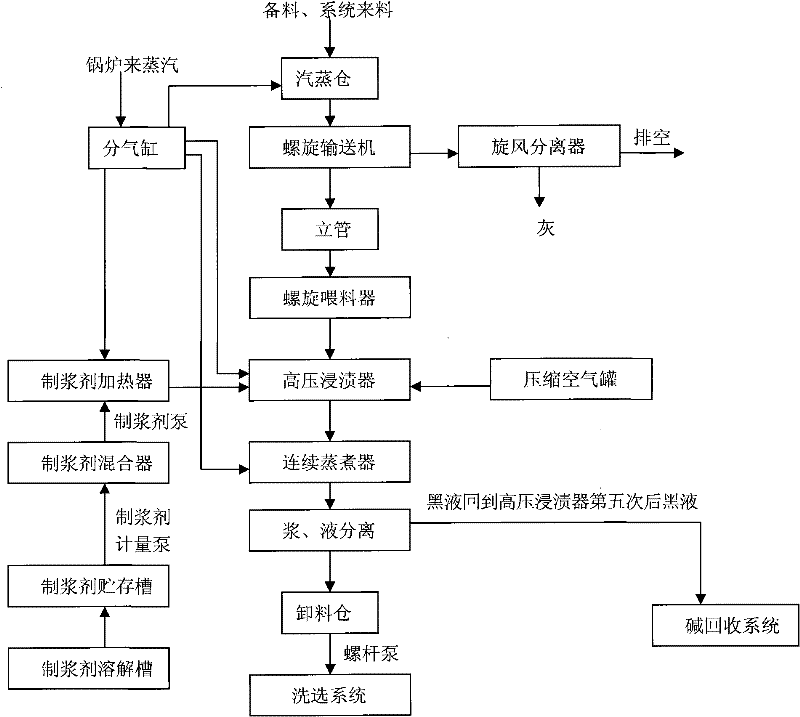Pulping agent and method for applying same to production
A production method and pulping technology, which are applied in pulp beating/refining method, pulp bleaching, lye regeneration, etc., can solve the problems of high environmental pollution load, difficulty in stable discharge, and waste of resources in the pulp and paper industry. Achieve the effect of shortening pulping time, saving evaporation energy consumption and reducing investment
- Summary
- Abstract
- Description
- Claims
- Application Information
AI Technical Summary
Problems solved by technology
Method used
Image
Examples
Embodiment 1
[0055] The chemical formula (percentage by weight) of slurrying agent of the present invention is:
[0056] Soda Ash 10%; NaOH 10%; Chlorine Dioxide 8%; Silicate Stabilizer 3%; Cooking Aid 5%, and the balance is water. Among them, the cooking aid is 1% of magnesium salt; 0.2% of hydrochloric acid; 93% of acetic acid.
[0057] The cooking aid is made of raw materials into a 5% cloudy emulsion.
[0058] The above-mentioned main raw materials and cooking aids are added to the mixing heater, and it can be prepared after 1 hour of reaction.
[0059] This formula is suitable for pulping of bagasse, agricultural straw and grass fiber.
Embodiment 2
[0061] The chemical formula (percentage by weight) of slurrying agent of the present invention is:
[0062] Soda ash 14%; NaOH 15%; chlorine dioxide 11%; silicate stabilizer 5%; cooking aid 8%, the balance is water. Among them, the cooking aid is 2% ammonium salt; 0.5% hydrochloric acid; 93% acetic acid.
[0063] The cooking aid is prepared by making raw materials into 8% cloudy emulsion.
[0064] The above-mentioned main raw materials and cooking aids are added to the mixing heater, and it can be prepared after 1 hour of reaction.
[0065] This formula is suitable for pulping forest wood fibers.
[0066] The application production process of pulping method of the present invention:
[0067] Example 1:
[0068] Bagasse is used as the raw material, cooked and reacted at normal temperature and pressure for 50 minutes, the ratio of the raw material to the pulping agent is 1:3, and the pulping production process is consistent with the production process of the energy-saving an...
Embodiment 3
[0072] Bamboo is used as raw material, the temperature is 135° C., the pressure is 2 kg, and the cooking reaction is 20 minutes. The ratio of raw material to pulping agent is 1:5. The production process is the same as that of Example 1.
PUM
 Login to View More
Login to View More Abstract
Description
Claims
Application Information
 Login to View More
Login to View More - R&D
- Intellectual Property
- Life Sciences
- Materials
- Tech Scout
- Unparalleled Data Quality
- Higher Quality Content
- 60% Fewer Hallucinations
Browse by: Latest US Patents, China's latest patents, Technical Efficacy Thesaurus, Application Domain, Technology Topic, Popular Technical Reports.
© 2025 PatSnap. All rights reserved.Legal|Privacy policy|Modern Slavery Act Transparency Statement|Sitemap|About US| Contact US: help@patsnap.com



